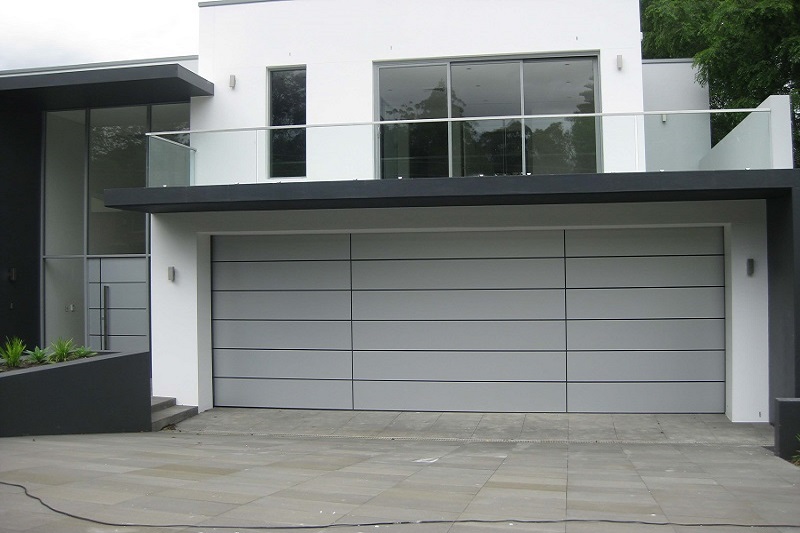
A garage door has a great contribution in rendering safety and protection to your car. This needs to be constructed and maintained well to keep the car safely parked when not in use. Garage doors are large in size, fitted to a garage, which can be opened and closed either manually or by an electric motor provided with Garage Doors opener having a provision of remote-control operation.
Garage doors size is generally large enough to let automobiles and other small vehicles pass through it. Small garage doors are made up of single panel design that can tilt up and back all along the garage ceiling. In case of the larger doors, they are usually made with multiple jointed panels. Let’s have a look at the different types of garage doors.
Types of Garage Doors

Here are some of the most common types of garage doors installed these days:
1. Single panel design garage doors
Single panel design doors are constructed out of one monolithic panel. From the closed position, a single panel door can swing up, and the overhead provision of a hinge on both sides allow it to fully open. A disadvantage of the monolithic panel type mechanism is that it can swing up an arc of the door which occurs partially outside of the garage. This needs the vehicle to stop and park several feet in front of the door to avoid being hit by the Garage Doors when opened.
2. Sectional garage doors
Sectional doors are generally constructed of three to eight pieces of panels and can slide up and overhead. Sectional door design occupies exactly the same space of internal garage of monolithic design.
3. Roller doors
Roller or sheet garage doors are usually fabricated with the corrugated steel sheet material. Other alternative materials are transparent corrugated fibreglass where strong impact resistance is not apprehended. Corrugations give the door extra strength to work against abusive impacts. A typical single car garage roller door has a preloaded spring mechanism inside the roller. The spring subsidizes the effort required to open the door. Larger roller doors in commercial premises have no spring mechanism and use a manual chain pulley block or a geared motor for opening the doors.
Garage Door Material Options for Construction
Some common materials used for constructing garage doors are:
Aluminium: Aluminum garage doors are cheaper, light in weight, corrosion free, and need low-maintenance. However, they are prone to denting easily due to the poor mechanical strength of aluminium.
Fibreglass and Vinyl: Fiberglass and vinyl garage doors are fabricated as a composite unit, reinforced with a steel core behind a fibreglass or vinyl sheet. They also have the provision of polyurethane insulated base sections or other foam material insulation. These premium doors can replace steel garage doors, and be a realistic imitation of wood, but they are costlier than steel units.
Steel: Steel doors are very common and are available in a wide variety of sizes and styles. A garage door made of steel is more beneficial in terms of strength and security point of view as well. Cost is also competitive, and it may have optional insulating value too. Extra strength may be achieved by using two or three plies.
Conclusion
Summing up all the above, there are so many types of garage doors to choose from. They can be single panelled, sectional or roller doors. There are electric doors as well that operate with remote control. Each material used to construct doors has its own advantages and disadvantages. You need to choose the one that best suits your personal requirements and your locality’s climatic condition. Keeping your Garage Doors well maintained is crucial to make the most out of it.





